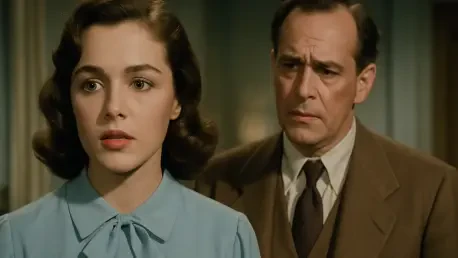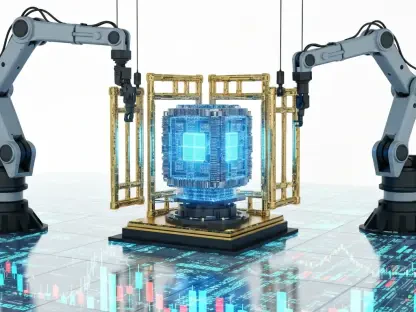In a groundbreaking development that has both captivated and polarized the entertainment industry, artificial intelligence has breathed new life into a cinematic treasure long thought incomplete, while igniting a fierce discussion about the future of creativity. A project led by Edward Saatchi, CEO of the Amazon-backed startup Fable, has utilized AI to restore missing footage from Orson Welles’ 1942 masterpiece, The Magnificent Ambersons, a film famously altered by studio executives against the director’s wishes. This technological feat not only showcases AI’s potential to preserve cultural history but also raises profound questions about its role in storytelling. As Hollywood grapples with the implications of AI-generated content, opinions are sharply divided between those who see it as a revolutionary tool and others who fear it could undermine human artistry. This clash of innovation and tradition sets the stage for a broader examination of how technology is reshaping the landscape of film and entertainment.
Reviving Cinematic History with AI
The restoration of The Magnificent Ambersons stands as a testament to AI’s remarkable ability to bridge gaps in cinematic history. Fable’s non-commercial, academic project, supported by filmmaker Brian Rose’s meticulous research into surviving scripts and archival materials, has digitally reconstructed lost footage to align with Welles’ original vision. Using their interactive platform Showrunner, the team has recreated scenes through advanced techniques like 3D set reconstructions, offering a glimpse into what might have been had the studio not intervened. This endeavor highlights how AI can serve as a powerful tool for film preservation, allowing future generations to experience works as they were initially intended. Beyond mere restoration, the project underscores a growing trend where technology can salvage incomplete or damaged cultural artifacts, providing a lifeline to stories that might otherwise be lost to time.
Equally compelling is the broader potential of such initiatives to redefine how history is accessed and understood in the realm of cinema. The painstaking effort to replicate Welles’ vision demonstrates a synergy between human expertise and machine precision, as AI processes vast amounts of data to fill narrative voids. This collaboration raises intriguing possibilities for other lost or altered films, suggesting that countless classics could be revisited and reimagined. However, it also prompts a critical question about authenticity—whether an AI-generated recreation can truly capture the nuanced intent of an artist like Welles. As this technology advances, it becomes clear that while it offers unprecedented opportunities to preserve the past, it also challenges traditional notions of authorship and artistic integrity in the filmmaking process.
Hollywood’s Evolving Stance on AI Innovation
Initially met with skepticism, AI’s integration into Hollywood has seen a notable shift as studio executives begin to recognize its financial advantages. Edward Saatchi has pointed out that AI-generated content, such as fan-created scenes or even full features released alongside traditional movies, could open up significant new revenue streams. This growing acceptance marks a departure from early resistance, driven by the realization that embracing AI might be essential to staying competitive. If studios hesitate, there’s a risk that tech giants like Google could dominate this emerging space, reshaping the industry in ways that prioritize technology over traditional storytelling. This evolving perspective reflects a pragmatic approach, balancing innovation with the economic realities of a rapidly changing market.
Yet, this optimism is not universally shared, as many within the industry harbor deep concerns about AI’s long-term impact on creative professions. Writers, actors, and filmmakers fear that automation could lead to job displacement, a worry that fueled significant unrest during the 2023 WGA and SAG-AFTRA strikes. The ability of AI to generate original content or replicate performances raises valid apprehensions about whether human roles in storytelling might diminish over time. While some see AI as a collaborative tool that enhances creativity, others view it as a potential threat to the very essence of what makes cinema a human endeavor. This tension illustrates a broader struggle within Hollywood to define boundaries for AI, ensuring that technological progress does not come at the expense of the artists who have long been the heart of the industry.
The Duality of AI as Creator and Disruptor
Edward Saatchi envisions AI not merely as a tool but as a creative species in its own right, a perspective that both excites and alarms. He argues that this shift could herald a new era of entertainment, likening AI’s potential to what visionary artists like Warhol or Da Vinci might have embraced. Such a view paints AI as a partner in storytelling, capable of producing works that challenge conventional boundaries and inspire novel forms of expression. This optimistic outlook suggests that rather than replacing human creativity, AI could expand its horizons, offering fresh narratives and perspectives that might never emerge from traditional methods. The idea of technology as a co-creator opens up a realm of possibilities for studios and audiences alike, promising a future where entertainment is more dynamic and inclusive.
On the flip side, the notion of AI as a creative force stirs significant unease among those who value the uniquely human aspects of art. The fear that technology might overshadow or replicate personal expression strikes at the core of what many consider the soul of filmmaking. This apprehension is compounded by ethical dilemmas surrounding authorship—when a machine generates content, who claims ownership of the resulting work? As AI continues to evolve, its capacity to produce original material could blur the lines between creator and creation, challenging long-held norms. This duality of AI as both an enabler of innovation and a source of disruption underscores the complex debate unfolding in Hollywood, where the promise of progress must be weighed against the risk of losing the human touch that defines cinematic storytelling.
Navigating the Future of Creativity
Reflecting on the journey of AI in entertainment, it’s evident that projects like the restoration of The Magnificent Ambersons mark a pivotal moment in how technology intersects with cultural preservation. The meticulous reconstruction of lost footage showcased a harmony between human dedication and machine capability, setting a precedent for how history could be reclaimed. Meanwhile, Hollywood’s gradual acceptance of AI hinted at a willingness to adapt, even as voices of caution echoed through the industry. The strikes of 2023 stood as a reminder of the real fears that accompanied this technological wave, highlighting a collective push to safeguard creative livelihoods.
Looking ahead, the industry faces a critical task of striking a balance between embracing AI’s potential and protecting the essence of human artistry. Establishing clear guidelines for AI’s role in content creation emerges as a necessary step to ensure fair collaboration. Encouraging dialogue among technologists, creatives, and executives could foster solutions that harness innovation without sidelining talent. As this technological frontier expands, the focus shifts to crafting a future where AI amplifies storytelling, preserving the irreplaceable value of human imagination while exploring uncharted creative territories.









